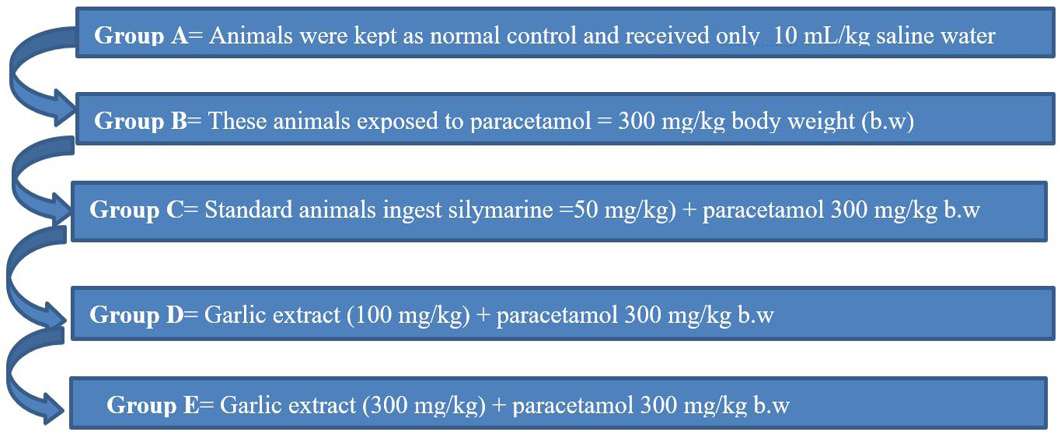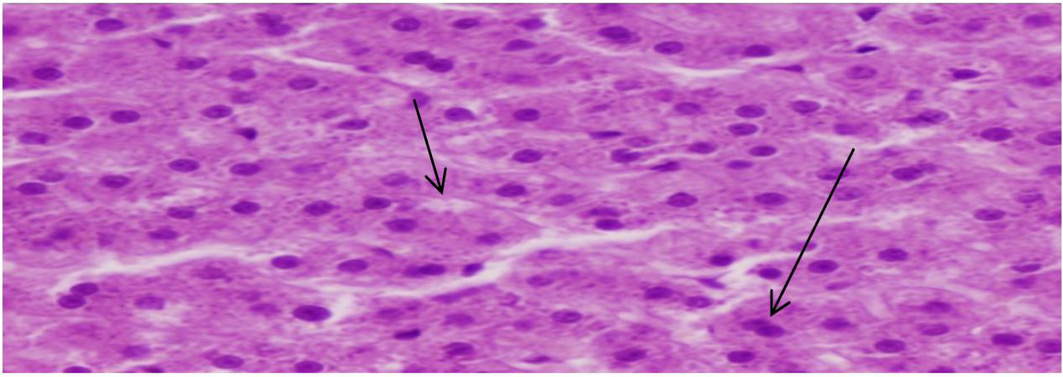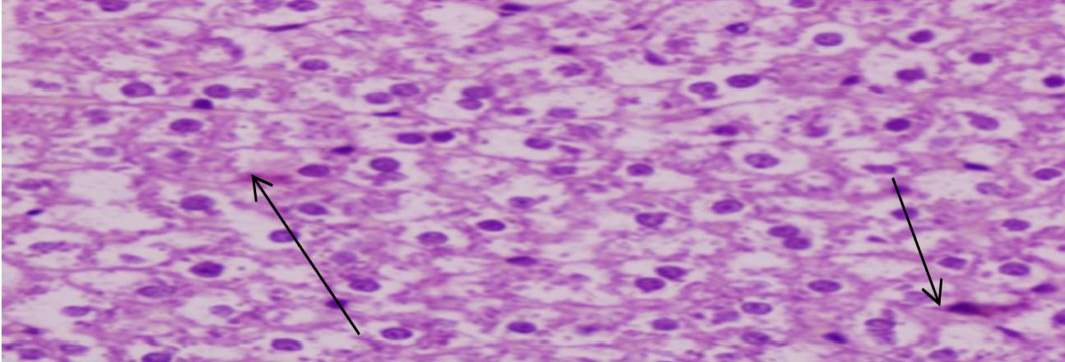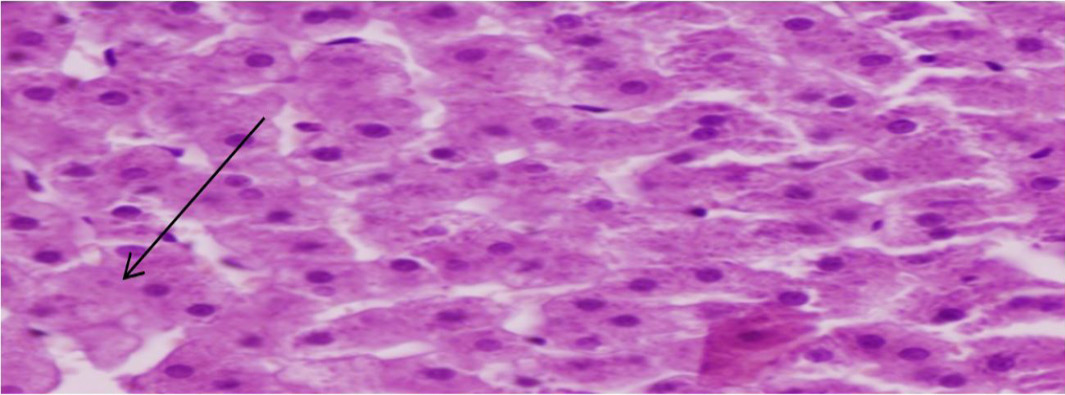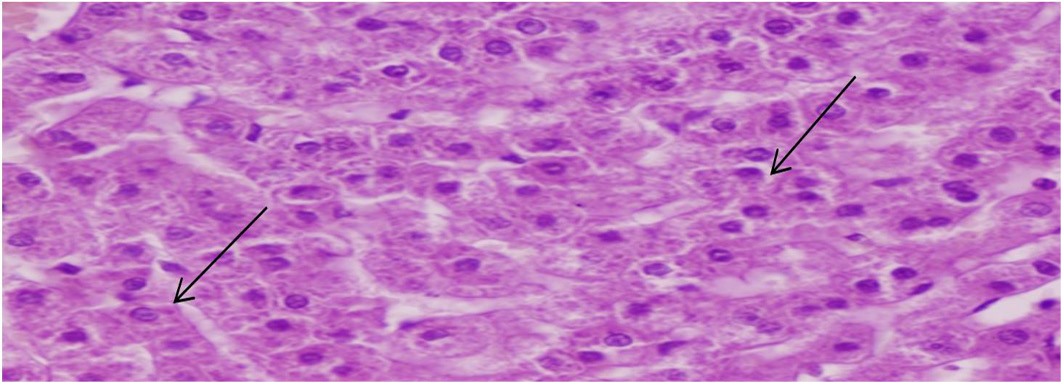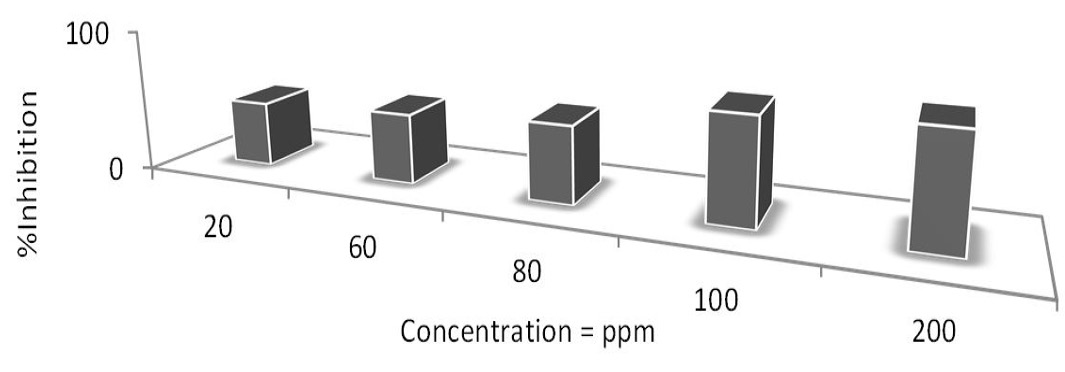Regulatory Effects of Garlic Extract (Allium sativum L.) on Hematobiochemical Markers in Rabbits Intoxicated with Paracetamol
Regulatory Effects of Garlic Extract (Allium sativum L.) on Hematobiochemical Markers in Rabbits Intoxicated with Paracetamol
Bashir Ahmad1*, Ali Muhammad Yousafzai2, Waqar Ali1, Ikram Ilahi1, Farman Ullah3, Saeed Ahmad1, Ayaz Ali Khan1, Umair Ahmad2 and Hafsa Maria2
Showing animal grouping and treatment pattern.
Hepatic micrograph from normal rabbit (group A) suggest healthy cellular structure with well-developed mitochondria and nuclei.
Liver sections from intoxicated rabbits (group B) having necrosis and intrusion of liver cells, arrows indicating damage area.
Histological image from rabbit liver (group C), arrows signifies slight hepatocellular organization and healing of necrosis and restoration of cellular stability.
Section of rabbit liver treated with 100 mg of Garlic extract (group D), arrows representing minor infiltration of inflammatory cells along with mild necrotic areas.
Histopathological photo of rabbit liver treated with 300mg of Garlic extract (group E) arrows suggest progression in the hepatic tissue and upsurges of hepatocytes morphology.
Linearity between increase in concentration (ppm) of garlic extract and increase in % inhibition of stable DPPH radical.





